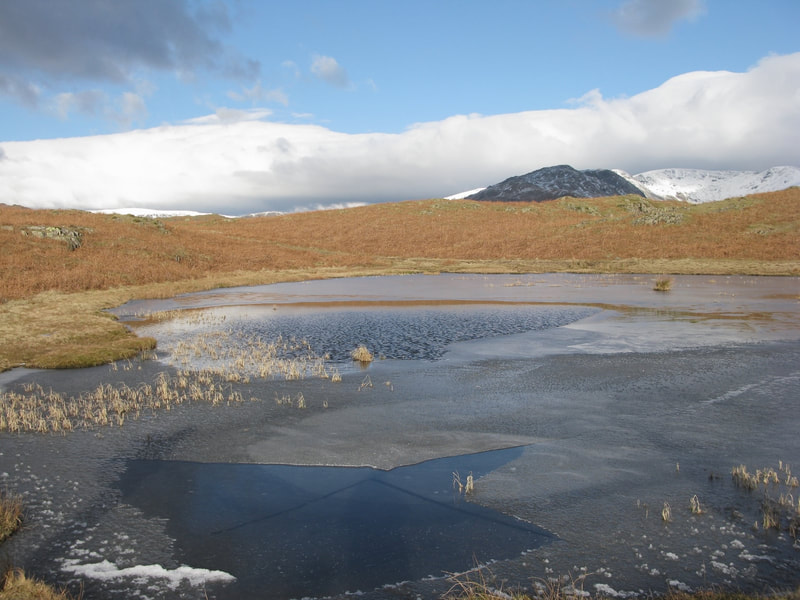 Lily Tarn 1st February 2009
Lily Tarn 1st February 2009 On 10th January, we set out from Ambleside, earth hard as iron, and came upon a frozen Lily Tarn scattered with chunks of ice. Bracken glowed deep and warm, though visibility was poor with a low cloud base and high humidity.
We descended by juniper gullies overhung with outcropping rock. In the gloom of an early afternoon the River Rothay ran black as ink, with purple alder catkins and wizened old cones. We sat below Nab Scar, looking across Rydal Water toward Loughrigg, now lost in mist and murk.
Approaching Rydal Hall, someone on a quad bike dragged a limb of rhododendron- a shuddering screen of foliage and a Birnam Wood experience. Ancient trees in Rydal Park were embossed with burrs. A fire blazed where five years ago an oak had fallen and now, threatening to topple onto the footpath, it was being sawn up. There was a row of cut logs and the woodcutter had stacked branches and kindling against the huge stump of the tree and fired it to reduce the size before he shifted it. A shower of sparks and a red-hot glow at the heart of the fire was the focal point in the gloom and chill of a January afternoon.
The Langdales looked icy. A hollow-trunked ash pollard by Loughrigg Tarn had icicles dripping from its pared-back bark and bore holes of invertebrates riddled its rotting wood. Conifer needles spread amongst the bare branches and in the poll a mat of roots probed the air, a tree within a tree. A generous host, this ancient ash pollard. Ten years later and ancient tree is gone.
During the night came snow. There were school closures across Cumbria although the worst of the weather hit the east of the country. There must be children revelling in this, their first real snow.
7 February and the news had been dominated by winter weather of a severity not experienced in Britain for twenty years. The fells were treacherous: two men died in the Langdales and there were further serious accidents. The Mountain Rescue would not forget this fortnight.










 RSS Feed
RSS Feed